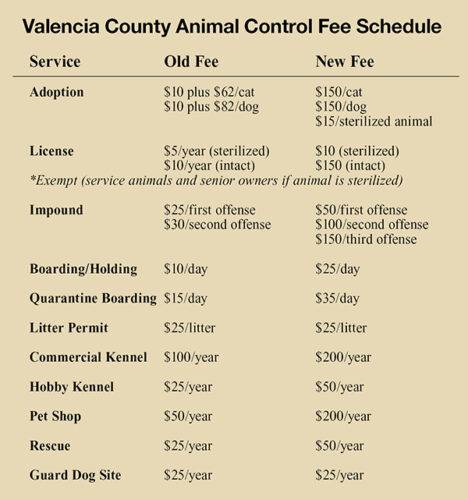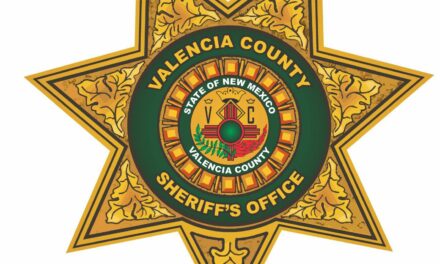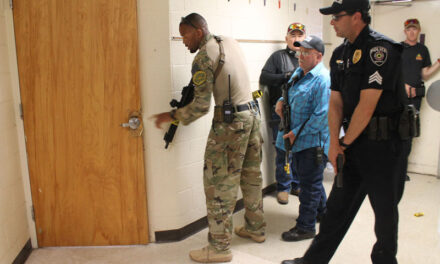Proposed changes to the county animal control ordinance puts more responsibility for pet welfare on the shoulders of owners.
New requirements for fencing, microchipping, tether limits and sterilization of animals impounded three times or more are included in the amendments to the ordinance.
During the Feb. 2 Valencia County Commission meeting, commissioners approved the publication of the title and description of the amended ordinance, which begins the process for a public hearing on March 2. During the hearing, county residents can weigh in on the proposed changes.
Valencia County Animal Control Director Jess Weston told the commissioners he’s been working on amending the ordinance since he took the job in 2016.
“We’ve been really focused on the spay/neuter program but this was also a significant focus,” Weston said. “I think this will benefit animal welfare in the community. We are going forward with what is the national standard. This is a way to move forward for animals in our community.”
Significant changes are proposed in the ordinance in regards to the restraint of animals, which requires animals be confined to an owner’s property, either in an enclosed pen with ample room for the animal to move freely within the pen, or with a fence or wall of sufficient height surrounding the perimeter of the property.
“We are looking at fencing so animals are not left out in yards on a tether. We are also looking at anti-tethering (regulations),” Weston said.
Because fencing an area large enough to comfortably confine a dog can be cost prohibitive for some owners, Weston said two nonprofits, New Mexico Dog and Animal Protection of New Mexico, have already pledged funds to help residents with the cost of enclosures.
“This revision has been needed for a long time. The ordinance was last updated in 2009,” the director said.
The proposed ordinance prohibits prolonged fixed-point tethering of an animal, making it allowable in limited circumstances, such as picnics or gatherings in a park or open space, for emergency purposes to permit someone to render aid to a person or another animal, and only when the owner is immediately present.
The leash length is proposed to be shortened to 6 feet rather than 8, and longer, retractable leashes may be used so long as the person with the dog is able to control it.
The new ordinance also defines allowed restraint devices as a rope, chain or other device that must be affixed to the animal by use of a non-abrasive, comfortably fitted collar or harness, or other device designed for that purpose.
The device and collar or harness shall be of appropriate size and weight so as to not cause sores or abrasions.
The device must be fastened so the animal can sit, walk and lie down comfortably, and must be unobstructed by objects that may cause the device or animal to become entangled or strangled. All chains or tethers shall have swivels on both ends.
The section of the ordinance addressing shelter was also updated to define adequate shelter as inside an owner’s home or an outside shelter appropriate for the breed and size of the animal, with four sides, roof, entryway and floor, as well as suitable insulation to protect the animal.
The shelter has to be leak-proof and free of standing water or mud, and free of accumulated waste and debris.
A structure, such as a garage, barn or shed that is sufficiently insulated and ventilated to protect the animal from extreme temperatures is considered adequate shelter under the revised ordinance, but areas beneath a car, truck, mobile home or machinery do not qualify as shelter.
Under the current ordinance, an impounded, intact animal will be released to its owner after payment of all impoundment fees and sterilization deposit, and the owner signs an agreement to have the dog or cat sterilized within 30 days of release or to obtain an intact animal permit.
Added to that section of the ordinance is a new requirement that an animal impounded three times or more shall be sterilized prior to release, at the owner’s expense.
The proposed ordinance also requires all animals older than 3 months in the county have a microchip implanted.
The commissioners also unanimously approved a new fee schedule for animal control services, which hasn’t been done in more than a decade, Weston said.
“The cost of care for animals, pay for officers, gas, electricity, training, all have gone up in cost,” he said. “Some fees aren’t going to see a huge increase, but the licensing fee for an intact animal is taking a big jump.”
The new fee for an intact animal is $150 a year per animal, up from $10.
“At the end of day, spay/neuter is an important thing for animals in the community. If we don’t want to euthanize, we have to get this squared away at the beginning of the process,” Weston said. “If you want an intact animal, you need to be able keep it on your property and be responsible for it.”
DRAFT: Valencia County Animal Control Ordinance (2022)
Julia M. Dendinger began working at the VCNB in 2006. She covers Valencia County government, Belen Consolidated Schools and the village of Bosque Farms. She is a member of the Society of Professional Journalists Rio Grande chapter’s board of directors.

















